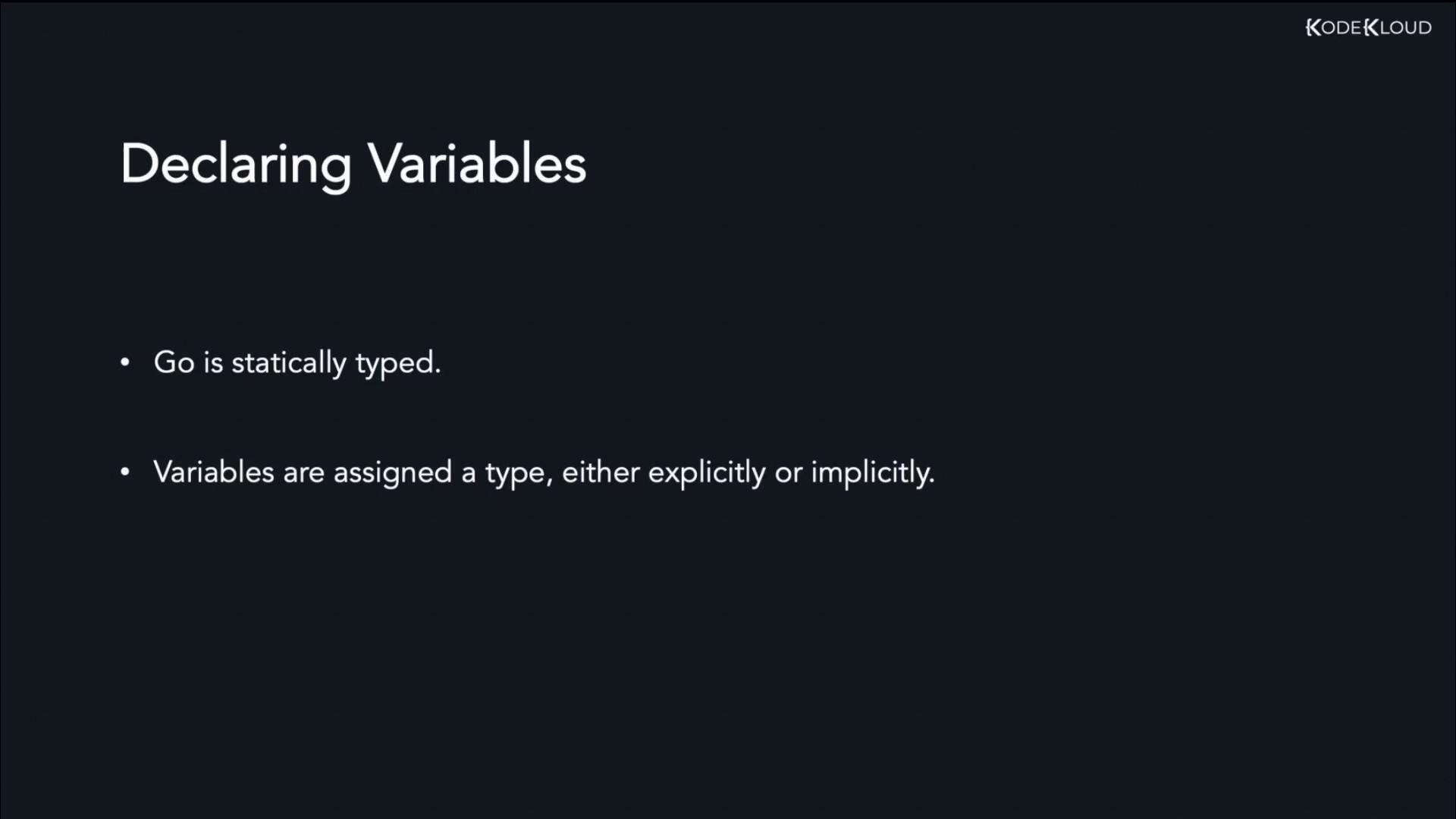Golang
Data Types and Variables
Variables Syntax and Declaration
In the previous lesson, we covered the various data types available in Go. In this lesson, we focus on storing data in variables by exploring variable declaration and syntax.
A variable in Go is a named storage location that holds a value. It serves as a reference to that value, forming the backbone of programming logic. Even if the value stored in a variable changes, its name remains constant.
Since Go is a statically typed language, each variable must have a data type—either explicitly stated by the programmer or inferred at compile time.

One common method to declare a variable in Go is by using the var keyword. The general steps involved in variable declaration include:
- Using the
varkeyword. - Specifying the variable name.
- Declaring the variable’s data type.
- Using the assignment operator (
=) to assign a value.
Below are examples of variable declarations for different data types.
Declaring a String Variable
To declare a string variable, use the following syntax:
var s string = "Hello world"
In this example, the variable s is assigned the string value "Hello world".

Declaring an Integer Variable
Similarly, you can declare an integer variable as shown below:
var i int = 100
Here, the variable i is of type int and stores the value 100.
Declaring a Boolean Variable
For Boolean values, the bool data type is used. Always write Boolean literals in lowercase:
var b bool = false
This statement initializes a Boolean variable b with the value false.
Declaring a Float Variable
Go supports two floating-point types: float32 and float64. The following declaration uses float64:
var f float64 = 77.90
This creates a variable f of type float64 set to the value 77.90.
Note
Variables in Go can also be declared without an initial value. In such cases, Go automatically assigns a zero value based on the type. For example, an uninitialized int variable gets a value of 0.
Running a Simple Example
Below is a complete program that demonstrates variable declaration and usage within the main function. This example uses the fmt package to print a variable's value.
package main
import "fmt"
func main() {
var greeting string = "Hello World"
fmt.Println(greeting)
}
To execute the program, run the following command:
$ go run main.go
Hello World
In this program, the variable greeting is assigned the value "Hello World", which is then displayed in the console.
That concludes the discussion on variable syntax and declaration in Go—an essential concept that underpins building robust Go applications. We'll see you in the next lesson.
References
Watch Video
Watch video content